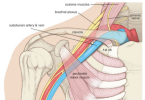What exactly IS functional training anyway? Young athletes are often coached on traditional exercises to increase their vertical, strength and power, but are these exercises the best way to train to maximize athletic ability?
Functional training vs. Traditional training: Functional training, for example, includes the common gym exercises like Olympic bar squats on the floor. Or maybe adding a slight jump to it if the training is for a vertical, or a basic bench press for upper body power. And neither is wrong … it’s just that there needs to be more in order to get maximum athleticism in our athletes. In previous articles, I talked about training the ligaments, tendons and collateral muscles for strength, and functional training takes those basic skills to the next level.
Leaving the traditional machines off to the side, we now add bosu’s, medicine balls, and resistance bands to the mix. We’re still working on strength, but a different type – a more pliable, functional strength that maximizes whatever muscles a particular sport calls for. In volleyball vertical jump training, for instance, I train the athletes to jump with power off unstable surfaces, in different directions, on one foot … all the things that make jumping off a stable surface during games easier.
Functional training nearly always engages the core and incorporates all of the smaller supporting structures, all the while training the actual movement that it’s created for. If you’ve read my other articles in SportsXpress, you’ll know that injury prevention is one of the most important aspects of all of my training. And functional training allows the progress of maintaining this integrity of structure.
There’s a lot to it! There is specific technique and phases to training functionally, so make sure that you find a professional trainer that can train specifically for sport. Here at BodyWorx, I specialize in young athletic training that starts with the basics and ends with success.
Tania Admans, Owner, Personal Trainer, Conditioning Coach
142 Fullarton Street
tania@bodyworxtraining.com
519 858 BODY
Submitted by BodyWorx







